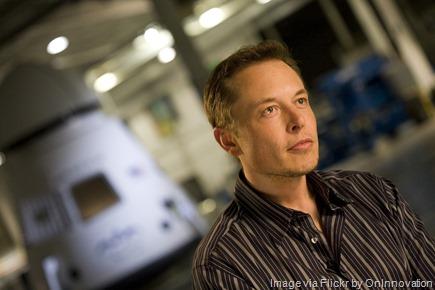 How is it that only a few business leaders and entrepreneurs seem to drive exceptional results and disruptive innovation in this rapidly changing market economy (marketquake)? These few seem more adept at executing market and technology turns, not just incremental evolution. They consistently take bold steps to stay ahead of the curve, often contrary to conventional wisdom.
How is it that only a few business leaders and entrepreneurs seem to drive exceptional results and disruptive innovation in this rapidly changing market economy (marketquake)? These few seem more adept at executing market and technology turns, not just incremental evolution. They consistently take bold steps to stay ahead of the curve, often contrary to conventional wisdom.
Steve Jobs of Apple may have been the most visible example of this ability to “see around the corner,” but others often mentioned include Richard Branson (Virgin Group), and Elon Musk (SpaceX). Most of you could suggest one more, but not many.
While searching for some structure that could facilitate learning the process, I came across a classic book by G. Shawn Hunter, “Out Think,” which offers a step-by-step outline for executives to achieve this stage of creativity. It suggests that they need to shed outmoded management and organizational biases, to foster an atmosphere where disruptive innovation becomes the norm.
Here is my summary and interpretation of the ten strategies that he outlines for driving the disruptive innovations that entrepreneurs and startups all dream about:
-
Establish the engine of leadership. A classic IBM Global CEO study listed inspirational leadership (trust) in the top three characteristics leaders must have in today’s business landscape. These are about being true, honest, and teaming with others, inside and outside the company. Without trust, no one will ever follow even the best innovators.
-
Provoke with questions, not answers (inquiry). Peter Drucker once said “The most serious mistakes are not being made as a result of wrong answers. The truly dangerous thing is asking the wrong question.” Exceptional outcomes don’t come from standard answers to pre-defined questions by conventional leaders.
-
Mine the organization for expertise (exploration). Identify individuals within the organization who have led innovation over many years, as well as newer employees that share the same vision. Just as importantly, you have to deal quickly with innovation blockers, including bureaucrats, power mongers, and skeptics.
-
Dream well – you may find yourself there (aspiration). Aspiring to greatness requires uncovering and exploring truths – including hidden truths – and sharing them with others. The most innovative leaders expect the best of everyone, and develop the guru in others. Emulating perceived heroes and role models can lead to realizing your own aspirations.
-
Embrace new kinds of risk (edge). Finding the “edge” is similar to “finding flow,” being “in the zone,” or being “in the groove.” These are states conducive to heightened engagement, accelerated learning, and creativity. These states allow deep curiosity, exploration, and highly focused activity to occur, leading to disruptive innovation.
-
Collaborate to innovate (connection). To create a culture of innovation, leaders must first create a culture of collaboration. That means engaging and inspiring the creative talents of others, respecting employees’ ideas, and bringing new insights into group decisions. With collaboration, differences add up to more than the sum of the parts.
-
Borrow prior and current brilliance (mash-up). By constantly mashing up prior ideas, applications, and outcomes, powerful new combinations emerge that have value to customers. Find people who deviate positively from the norm, intentionally destabilizing the work environment, and foster moderate creative tension that can spark innovation.
-
Get moving or accept the consequences (action). Action counts – not words – especially when that action is novel and unique. Once you are in motion, actually producing something, people will respond, contribute, collaborate, and spread the word, driving energy and awareness your way. Innovation does not come without action.
-
Make it your own (signature). A signature innovative solution is born of the core identity of those who have joined in the innovation journey, executed with the unique personalities of participants. Signature innovation is not easily copied or pirated, because it comes out of a truly unique cultural identity within a team.
-
Connect with “why” (purpose). In any endeavor, there must be a purpose behind it if we are to receive maximum enjoyment, fulfillment, and a deeper sense of our own role in its achievement. Many companies and leaders now reinforce and demonstrate a commitment to responsible behavior that goes way beyond profit and individual gain.

